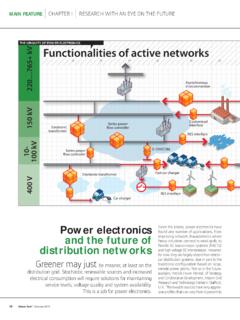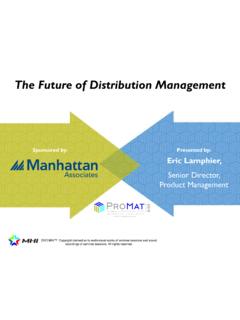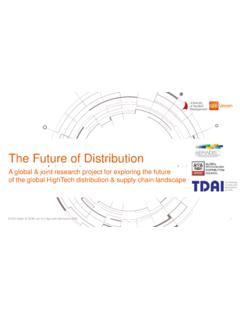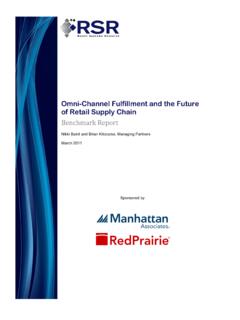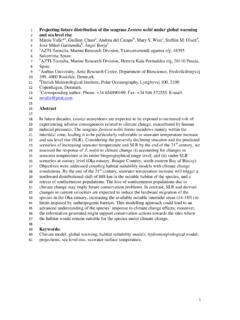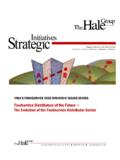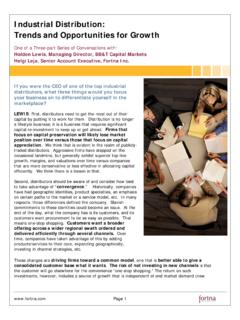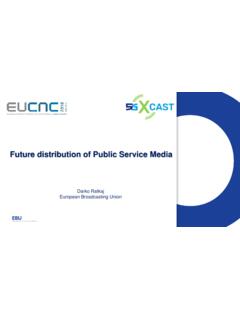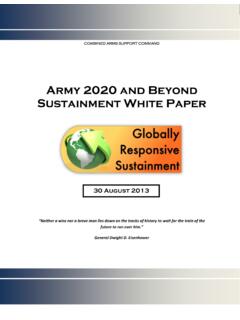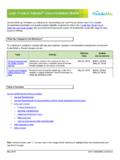Transcription of Power Systems of the Future - NREL
1 Contract No. DE-AC36-08GO28308 Technical Report NREL/TP-6A20-62611 February 2015 Power Systems of the Future A 21st Century Power Partnership Thought Leadership Report Owen Zinaman, Mackay Miller, Ali Adil, Douglas Arent, Jaquelin Cochran, and Ravi Vora national renewable energy laboratory Sonia Aggarwal energy Innovation: Policy and Technology LLC Minnesh Bipath South Africa national energy Development Institute Carl Linvill Regulatory Assistance Project Ari David Columbia University Business School Richard Kauffman Office of the Governor, New York Matt Futch national Grid Efra n Villanueva Arcos and Jos Mar a Valenzuela Secretar a de Energ a (SENER)
2 , Mexico Eric Martinot Institute for Sustainable energy Policies Morgan Bazilian Columbia University, Sustainable Engineering Lab Reji Kumar Pillai India Smart Grid Forum NREL is a national laboratory of the Department of energy , Office of energy Efficiency & renewable energy , operated by the Alliance for Sustainable energy , LLC. Contract No. DE-AC36-08GO28308 national renewable energy laboratory 15013 Denver West Parkway Golden, CO 80401 303-275-3000 Power Systems of the Future A 21st Century Power Partnership Thought Leadership Report Owen Zinaman, Mackay Miller, Ali Adil, Douglas Arent, Jaquelin Cochran, and Ravi Vora NREL Sonia Aggarwal energy Innovation.
3 Policy, and Technology, LLC Minnesh Bipath South Africa national energy Development Institute Carl Linvill Regulatory Assistance Project Ari David Columbia University Business School Matt Futch national Grid Richard Kauffman Office of the Governor, New York Efra n Villanueva Arcos and Jos Mar a Valenzuela Secretar a de Energ a (SENER), Mexico Eric Martinot Institute for Sustainable energy Policies Morgan Bazilian Columbia University, Sustainable Engineering Lab Reji Kumar Pillai India Smart Grid Forum Prepared under Task No Technical Report NREL/TP-6A20-62611 February 2015 NOTICE This report was prepared as an account of work sponsored by an agency of the United States government.
4 Neither the United States government nor any agency thereof, nor any of their employees, makes any warranty, express or implied, or assumes any legal liability or responsibility for the accuracy, completeness, or usefulness of any information, apparatus, product, or process disclosed, or represents that its use would not infringe privately owned rights. Reference herein to any specific commercial product, process, or service by trade name, trademark, manufacturer, or otherwise does not necessarily constitute or imply its endorsement, recommendation, or favoring by the United States government or any agency thereof.
5 The views and opinions of authors expressed herein do not necessarily state or reflect those of the United States government or any agency thereof. NREL prints on paper that contains recycled content. iii This report is available at no cost from the national renewable energy laboratory (NREL) at Acknowledgments The authors would like to thank the Advisory Group for this report, who provided invaluable guidance and comments: Susanne Ackeby, Swedish Transmission Research Institute Bo Normark, PowerCircle Ron Binz, Public Policy Consulting Susan Tierney, Analysis Group Lawrence Jones, Alstom Grid Bosco Astarloa and Katherine Avgerinos, World Economic Forum Kaare Sandholt, China national renewable energy Center Ken Locklin, Impax Asset Management The authors would also like to thank Karin Haas, Lauren Zwicker, and Scott Gossett for their invaluable support throughout the writing, design and publication process.
6 Iv This report is available at no cost from the national renewable energy laboratory (NREL) at Abstract This report summarizes key forces driving transformation in the Power sector around the world, presents a framework for evaluating decisions regarding extent and pace of change, and defines pathways for transformation. Powerful trends in technology, policy environments, financing, and business models are driving change in Power sectors globally. In light of these trends, the question is no longer whether Power Systems will be transformed, but rather how these transformations will occur. Three approaches to policy and technology decision-making can guide these transformations: adaptive, reconstructive, and evolutionary.
7 Within these approaches, we explore the pathways that have emerged as viable models for Power system transformation, listed below. Next-generation Performance-based Regulation Pathway: In this adaptive pathway, vertically-integrated utilities remain in a recognizable form, but evolve to prioritize delivery of value instead of minimizing costs. Clean Restructuring Pathway: In this reconstructive pathway, new Power market restructuring efforts are initiated, incorporating lessons learned from the past 20 years, including design features to facilitate clean energy integration and system optimization. Hindsight is 20/20 this reconstructive pathway brings hindsight to bear on restructuring and reform.
8 Unleashing the DSO Pathway: distribution system operators (DSOs) are poised to innovate in order to drive clean generation deployment and Power system flexibility. In this evolutionary pathway, regulatory and policy frameworks give clear signals to these DSOs, empowering them as the centerpiece for orchestrating distributed energy resources and low-voltage market functioning. Bottom-of-the-Pyramid (BOP) Coordination Pathways: Accelerating energy access has been a chronic challenge for decades. New technology configurations and business models are opening up opportunities for innovative approaches to energy access, especially when linked to broader social development goals.
9 In this context, two pathways emerge: o Adaptive Bottom-up Coordinated Grid Expansion o Evolutionary Bundled Community energy Planning strategies, leading to integrated, socially-customized energy access solutions. These pathways are illustrated in Figure X - 1, linked to illustrative Power system starting points commonly found around the world today. v This report is available at no cost from the national renewable energy laboratory (NREL) at Figure X - 1. Power system Pathway Origins Charting the course for Power system change involves complex decision-making across policy goals, technological Systems , social contexts, and f inancial networks.
10 Rather than centering the discussion on potential utility business models or regulatory frameworks as has been ably captured in other reports we instead consider the transformation of the broader Power system ecosystem. The five pathways explored in the report, each grounded in current experience around the world, provide a useful framework from which policymakers can consider, deliberate, and guide transformation. vi This report is available at no cost from the national renewable energy laboratory (NREL) at Table of Contents 1 Introduction .. 1 2 Ten Trends Driving Power system Evolution .. 3 renewable energy Cost Reductions.










